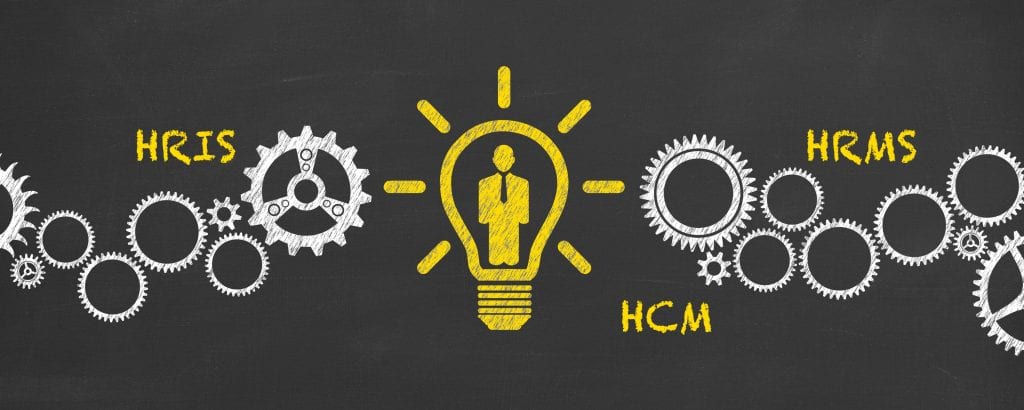When it comes to the world of HR, it sometimes feels like there are more acronyms than anyone could ever hope to keep track of. And, while many work in the HR space day in and day out, the average person doesn’t know the difference between various solutions—and, frankly, the industry as a whole hasn’t done a great job educating consumers about the topic.
That’s why we put together this helpful guide that will walk you through the pros, cons and differences between an HRIS (human resource information system), an HRMS (human resource management solution), and HCM (human capital management). Knowing the ins and outs of these three terms provides a solid foundation to build on when it comes to HR knowledge as a whole.
HRIS, or Human Resource Information System
As for HR solutions, think of an HRIS as the absolute essentials needed for your company to run properly. An HRIS provides you with “core HR” functionality, and helps you track, measure, and automate these tasks to optimize your business operations. If HR solutions were a car, think of an HRIS, or core HR, as the engine.
An HRIS is the database at the center of your organization, tying information—like payroll, benefits, attendance and other related data—to individuals. It also handles recruiting, tax compliance, personnel tracking, and reporting.
With an HRIS, this information isn’t only available to administrators within a company, but also to the employee through self-service options. One example of an HRIS solution is Arcoro’s Core HR module.
HRMS, or Human Resource Management Solution
Going back to the analogy of a car: if an HRIS is a basic engine, an HRMS would be an engine with a few more bells and whistles. HRIS and HRMS are more or less interchangeable terms, apart from one key difference: an HRMS includes all the core functionality of HRIS in addition to talent management.
Talent management helps businesses guide the careers of their current employees through performance tracking and succession planning, where an admin maps out an employee’s potential candidacy for filling internal job openings. With an HRMS, you’ll have access to core HR features and can plan for your company’s future by placing individuals in positions best suited for them with talent management software.
HCM, or Human Capital Management
If an HRIS is the engine, and an HRMS is an enhanced engine, think of an HCM solution as the entire vehicle—the paint, the wheels, the windshield, and other accessories. HCM is the full package because it deals with the entire employee life cycle, from attracting the employee with recruiting software to managing them with career development software to offboarding employees, and much more.
Because of their full-scale functionality, HCM solutions are usually the “drink of choice” for larger enterprises, but thanks to newer companies coming onto the scene in recent years, small and medium-sized businesses are now also benefiting from HCM.
Gartner puts it another way. According to the research firm, there are four key areas of human resources that HCM solutions support:
- HR administration (payroll, requesting time off, etc.)
- HR service delivery (access to company policies, procedures, documents, etc.)
- Talent Management
- Workforce Management (time and attendance tracking, shift scheduling, absence management, etc.)
More specifically, some of the features an HCM solution offers include all of the capabilities of an HRIS and HRMS solution, payroll, employee shift scheduling, employee time tracking, Applicant Tracking Systems (ATS), training, onboarding, budget planning, and absence management.
Some examples of companies in the marketplace offering HCM solutions include ADP, Zenefits, and our team at Arcoro.
Navigating through the HR world can be intimidating at first. Yet, by combing through the differences laid out in this article, you’ll be in a great position to decide which solution is the best fit for your company’s particular needs.




